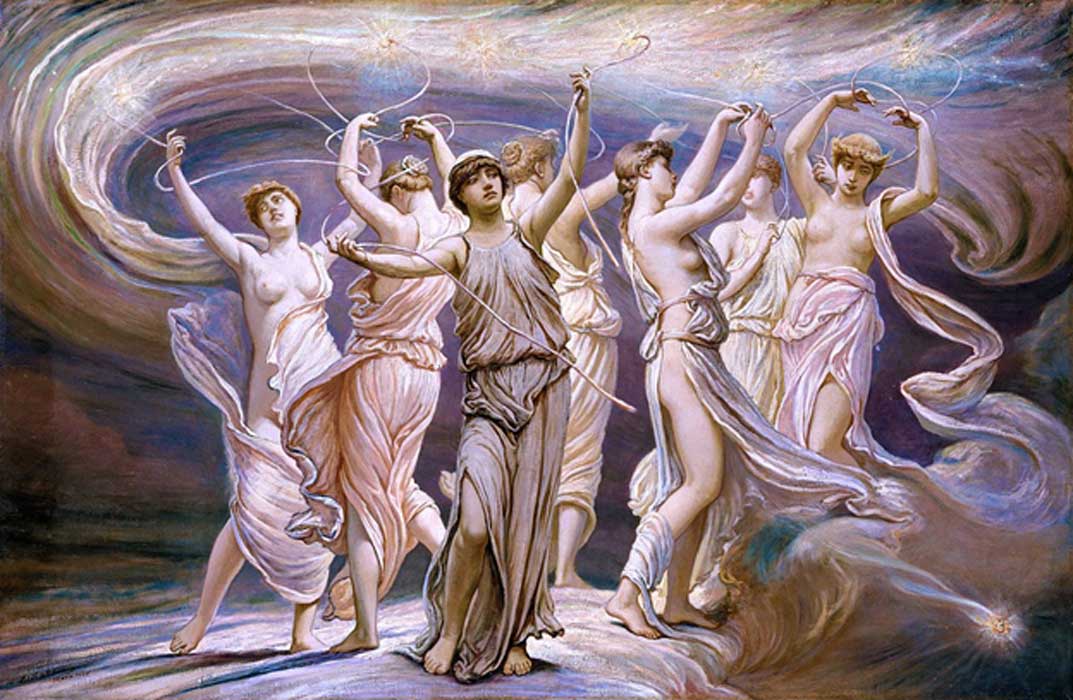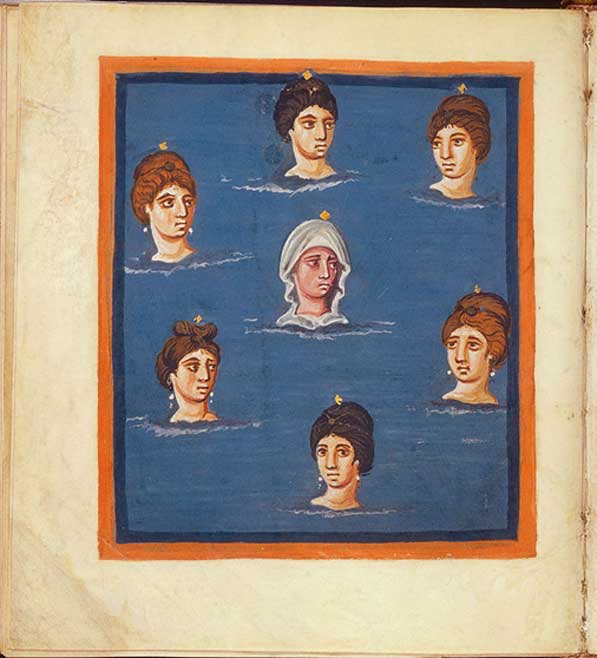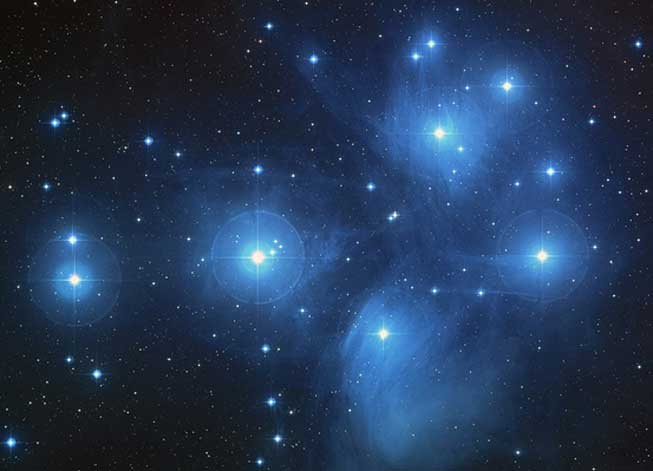
From the Ancient Greek Pleiades to the Hindu Matrikas: Mother Goddesses, Music and the Sacred Number 7
In Brihat-Samhita, Indian astronomer Varahamihira (505–587 CE) says that "Mothers are to be made with cognizance of gods corresponding to their names” leading to the birth of Matrikas (“Divine Mothers”) who are then associated with some of the major gods of the Hindu pantheon as their shaktis (energies). The Matrikas are Brahmani (from the creator god Brahma), Vaishnavi (from the preserver-god Vishnu), Maheshvari (of Shiva), Indrani (of Indra, the king of the gods), Kaumari (of Skanda, Shiva’s son as well as the god of war), Varahi (of Varaha, the avatar of Vishnu in the form of a boar) and Chamunda (of Devi).
The Matrikas have existed from as early as the Indus Valley civilization (3300–1700 BCE). The Rigveda (c. 1700–1100 BCE) merely refers to them as a group of seven mothers who control the preparation of soma (the drink of the gods). However, by the fifth century CE, the Matrikas were already incorporated in Hinduism as Tantric deities. The Saptamatrikas (“The Seven Divine Mothers”) were especially connected with Skanda and later associated with the sect of Shiva. In the Western Ganga Dynasty (350–1000 CE) kings of Karnataka built many Hindu temples with carvings of the Saptamatrikas as well as memorials containing sculptural details of the seven mothers. The evidence of sculptures of the Matrikas is further shown in the Gurjara-Patiharas (eighth to tenth century CE) and Chandella period (eighth - twelfth century CE). Also between the sixth and the twelfth centuries CE, the Chalukya dynasty claimed to have been nursed by the Saptamatrikas themselves.
The idea of the seven mothers is not exclusive to the Matrikas. The Matrikas display many similarities with the ancient Greek Pleiades and ancient Korea’s Magos, including their depictions as mothers and the number seven, which is associated with many divine groups in ancient mythology.
The Matrikas, the Krittikas, and the Pleiades
The Pleiades are among the first stars mentioned in ancient literature, appearing in Chinese annals from c. 2350 BCE. The earliest European references of the star cluster are Hesiod’s Work and Days as well as in Homer’s Odyssey and Iliad. According to Greek mythology, the Pleiades were daughters of Atlas, the titan commanded by Zeus to hold up the earth, and the Oceanid nymph Pleione, protectress of sailors. The Pleiades were seven sisters - Maia, Alcyone, Asterope, Celaeno, Taygete, Electra, and Merope.

Pleiades. (Public Domain)
Like the Matrikas who are associated with the most prominent Hindu gods, the Pleiades are also associated with the most prominent male Olympian gods. The sisters’ affairs with the gods resulted in the birth of their children. Zeus fathered Hermes, brothers Dardanus and Iasion, as well as Lacedaemon through Maia, Electra, and Taygete respectively. Poseidon fathered Hyrieus, Hyperenor and Aethusa through Alcyone, as well as Lycus and Nycteus through Celaeno. Sterope mothered Oenomaus through Ares, and Merope, the youngest of the sisters, married Sisyphus and became mortal. She bore him several sons before she faded away - providing the background story to the fact that one of the seven Pleiades stars does not shine as brightly as the others.

The Pleiades, an open cluster consisting of approximately 3,000 stars at a distance of 400 light-years (120 parsecs) from Earth in the constellation of Taurus. It is also known as "The Seven Sisters", or the astronomical designations NGC 1432/35 and M45. (Public Domain)
The story Krittikas, the Hindu equivalent of the Pleiades, started with separations. In the Hindu mythology, the stars of the Big Dipper were the seven sages who were happily married to seven sisters named Krittikas until one day, the god of fire, Agni, fell in love with the seven Krittikas. Respecting the sages, Agni tried to forget his love by wandering through a forest where he met Svaha, the star Zeta Tauri, who fell in love with Agni. Knowing Agni’s infatuation towards the Krittikas, Svaha disguised herself as six of the seven sisters in order to seduce him. When Svaha had a child, rumors began to spread that six of the sages’ wives were the child’s mother. The six sages divorced their wives. As the six Krittikas went away to become the Pleiades, one Krittika remained with her husband, thus never seen to shine as brightly as her sisters.




